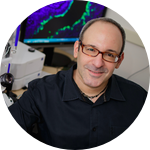About This Project
The anatomy of sharks is the most ancestral one within gnathostomes, the group which includes us. Paradoxically, shark embryology using modern molecular techniques remains poorly explored. Here we will conduct molecular gene expression assays during shark development, shedding light onto the molecular processes involved in the origin of particular morphological innovations in gnathostomes, including craniofacial, appendicular and gastrointestinal structures.
Ask the Scientists
Join The DiscussionWhat is the context of this research?
Sharks are the sister-group of all other living gnathostomes, retaining most of their ancient features. Thus, there are key questions in evolutionary biology that would benefit from data coming from shark embryological studies: 1) what molecular mechanisms may explain the origin of gnathostome-specific traits such are the jaws, neck, pelvic appendages or stomach?; 2) did pelvic and pectoral appendages originate from common or independent embryonic processes? 3) How did the skeleton, musculature and innervation accompanied and/or influenced the morphological innovations of gnathostomes? We will contribute to address these long-standing questions by combining the use of state-of-the-art techniques to characterize in detail the development of a shark model, the Scyliorhinus canicula.
What is the significance of this project?
Sharks are unique in the sense that they have an impressive number of features thought to be ancestral for gnathostomes: novel craniofacial elements (jaws and neck) locomotory appendages (pelvic fins) and gastrointestinal compartments (stomach). Thus, shark embryology may contribute to understand the origin of our own morphology. Here we will characterize the gene/protein profile associated to the formation of such structures in the shark model S. canicula. To this end, we will generate in situ hybridization, immunohistochemistry, RT-PCR and RNA-Sequencing data, combing molecular and morphological analyses during development. We expect to contribute to increase the interest on sharks, as model organisms, making our data available to researchers in an online platform.
What are the goals of the project?
We will study S. canicula development characterizing the gene/protein profile associated to the formation of gnathostome-specific traits. We will focus on craniofacial structures, paired appendages and stomach. We will also characterize skeleton, muscle and nerve formation during their development. To achieve our goals we will use three strategies: 1) gene expression assays targeted to specific genes known to be involved in the formation of homologues structures in traditional animal models, using RT-PCR and in situ hybridizations; 2) Rna-sequencing analyses during development to identify the transcriptome associated to the formation of those structures; 3) morphological characterizations throughout development, using specific markers for cartilage, muscle and nerves.
Budget
RT-PCR and in situ hybridization reagents: These parts of the budget will be used to adquire enzymes and molecular biology reagents required to perform these techniques.
Equipment for in situ hybridization: A hybridization oven will be required on a daily basis for proper probe penetration and washing during the in situ hybridizations to study gene expression.
RNA-seq and bioinformatic analyses: This part of the budget will be use to generate RNA-seq data from tissue collections at distinct developmental points and to perform the bioinformatic analyses.
Dissemination of the results: This part of the budget will be use to generate a platform online with gene/protein expression data coming from RT-PCR and in situ hybridizations, RNA-seq data and morphological characterizations throughout development using tissue specific markers. It may also be use to pay publication costs or scientific meetings.
Endorsed by
Meet the Team
Affiliates
Renata Freitas
As an evolutionary developmental biologist, I'm fascinated with sharks and with the fact that they are extant representatives of our basal gnathostome ancestral. During my PhD I had the chance to work on shark development with Martin J. Cohn (University of Florida) and I was surprised to realize that most detailed anatomical analyses on shark development were more than 100 years old. Moreover, only a few molecular studies that explored their developmental mechanisms were available. That was when I truly realized the importance to improve the experimental repertoire available for those animals in order to address evolutionary and developmental questions. We mainly explored the developmental mechanisms involved in median and paired appendage evolution, works that we published in Nature (2006) and Plos One (2007). But we also explored other aspects of their development such as the embryonic origin of their electrosensory organs (EvoDevo, 2006; Dev Genes Evol, 2004). More recently, I helped to set up a platform on shark development in Portugal (my home country) in collaboration with Filipe Castro (Portugal) and Jonathan Wilson (Canada) and we are undertaking a project on the evolution of the stomach, another characteristic that emerged at the root of divergence of gnathostomes. In this context we are able to bread sharks in our husbandry and to have regular access to embryos to perform molecular developmental studies. This has been attracting internship students with multiple interests, from purely scientific, to educational. We would like to involve international partners in our projects and to contribute to highlight the importance of sharks as model organisms. The involvement of Rui Diogo (USA) with our shark platform, as a science communicator and an outstanding vertebrate anatomist, will boost our scientific and educational purposes.
Rui Diogo
I am an associate professor, Howard University, Washington, District of Columbia, USA. As Fellow of the American Association of Anatomists, I am a multi-awarded researcher and the author or co-author of numerous publications, and the co-editor of the books "Catfishes"and "Gonorynchiformes and ostariophysan interrelationships". I am the sole author or first author of the books "Morphologicalevolution, aptations, homoplasies, constraints and evolutionary trends", "The origin of higher clades", "Muscles of vertebrates", "Photographic and descriptivemusculoskeletal atlas of Gorilla","Photographicand descriptive musculoskeletal atlas of gibbons and siamangs (Hylobates)", "Photographicand descriptive musculoskeletal atlas of orangutans", "Photographic and descriptive musculoskeletalatlas of a baby gorilla","Photographicand descriptive musculoskeletal atlas of chimpanzees", "Comparative anatomy and phylogeny of primatemuscles and human evolution", and "Learning andunderstanding human anatomy and pathology: an evolutionary and developmentalguide for medical students".
Lab Notes
Nothing posted yet.
Project Backers
- 7Backers
- 4%Funded
- $355Total Donations
- $50.71Average Donation



